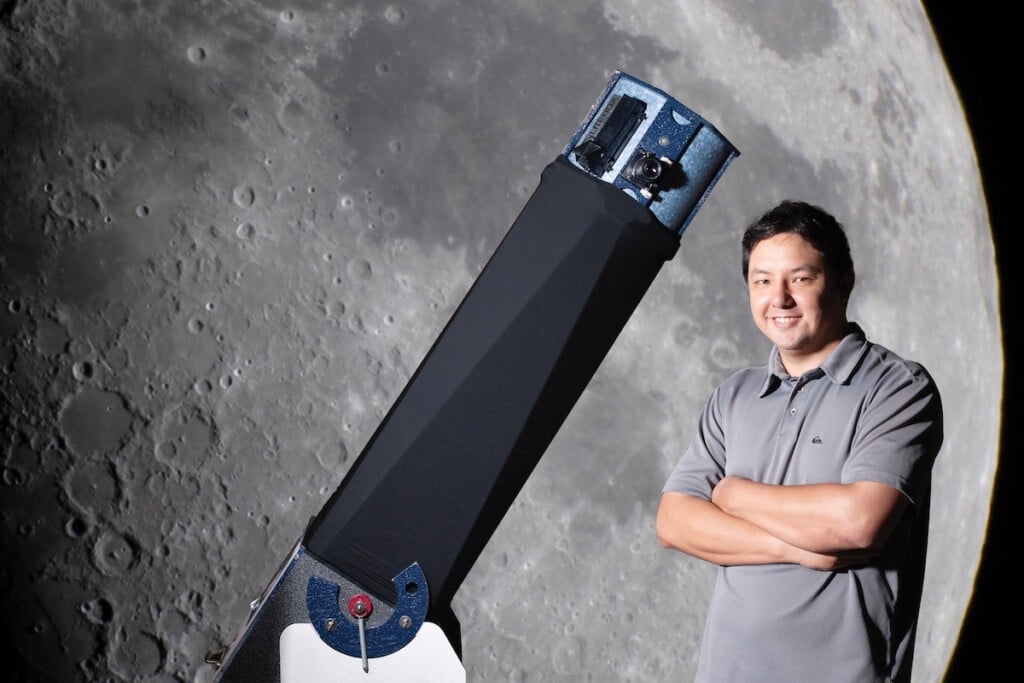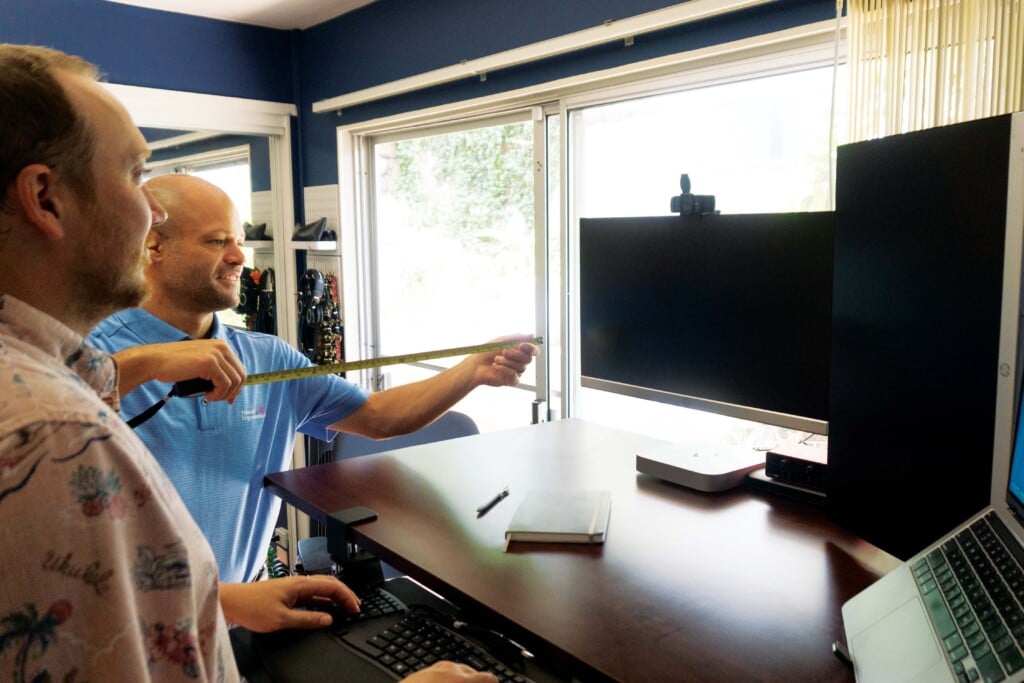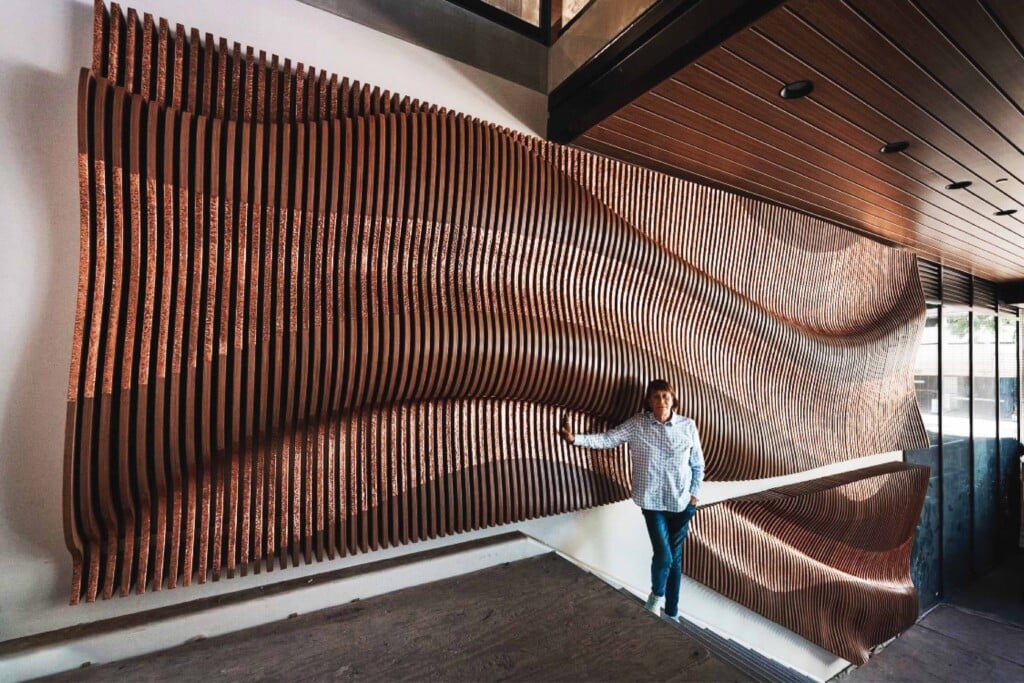Hawaiʻi’s Super Coral: Evolution on Fast Forward
Gates Coral Lab's objective is to breed a “Super Coral” more resilient to rising sea temperatures. Only 10 percent of the world’s coral reefs will be living by 2050, according to current projections, unless countermeasures are taken.
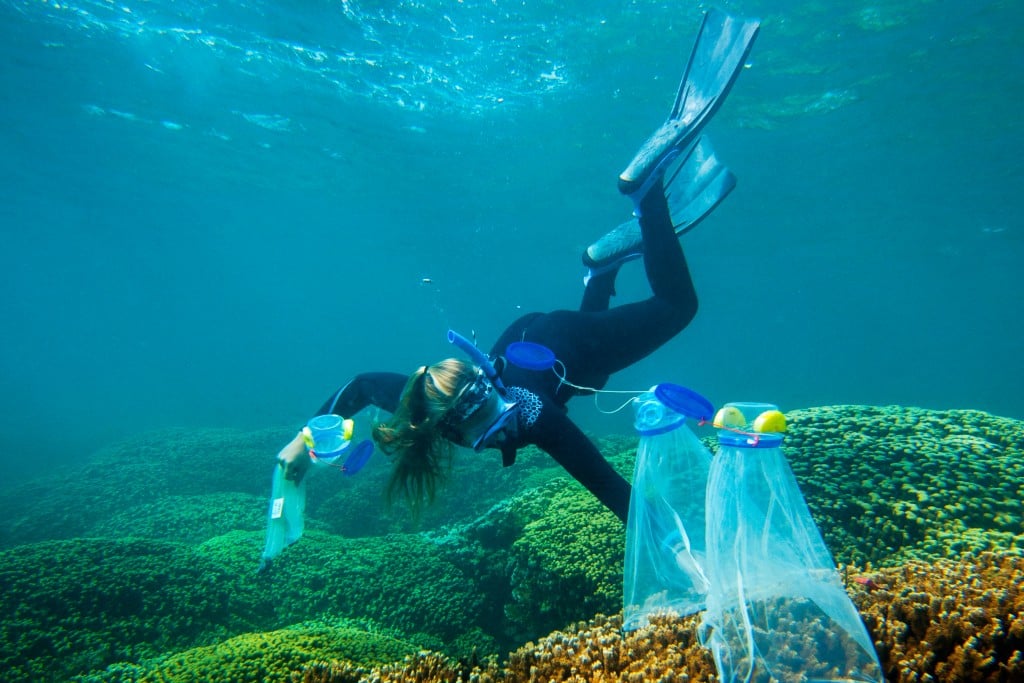
Gates Coral Lab intern Casey Harris sets collection nets on Montipora capitata colonies in Kāneʻohe Bay.
The resilient species is hermaphroditic and one of the main corals that build reefs in Hawaiian waters, says Research Project Manager Kira Hughes. Its reproductive cycle happens only during the summer when it releases egg sperm bundles precisely between 8:45 p.m. and 9:30 p.m. And just as surprising is they release no more than five times a year. The nets collect the bundles and scientists take them to the lab on Coconut Island. Their objective is to breed a “Super Coral” more resilient to rising sea temperatures, Hughes says. Only 10 percent of the world’s coral reefs will be living by 2050, according to current projections, unless countermeasures are taken.
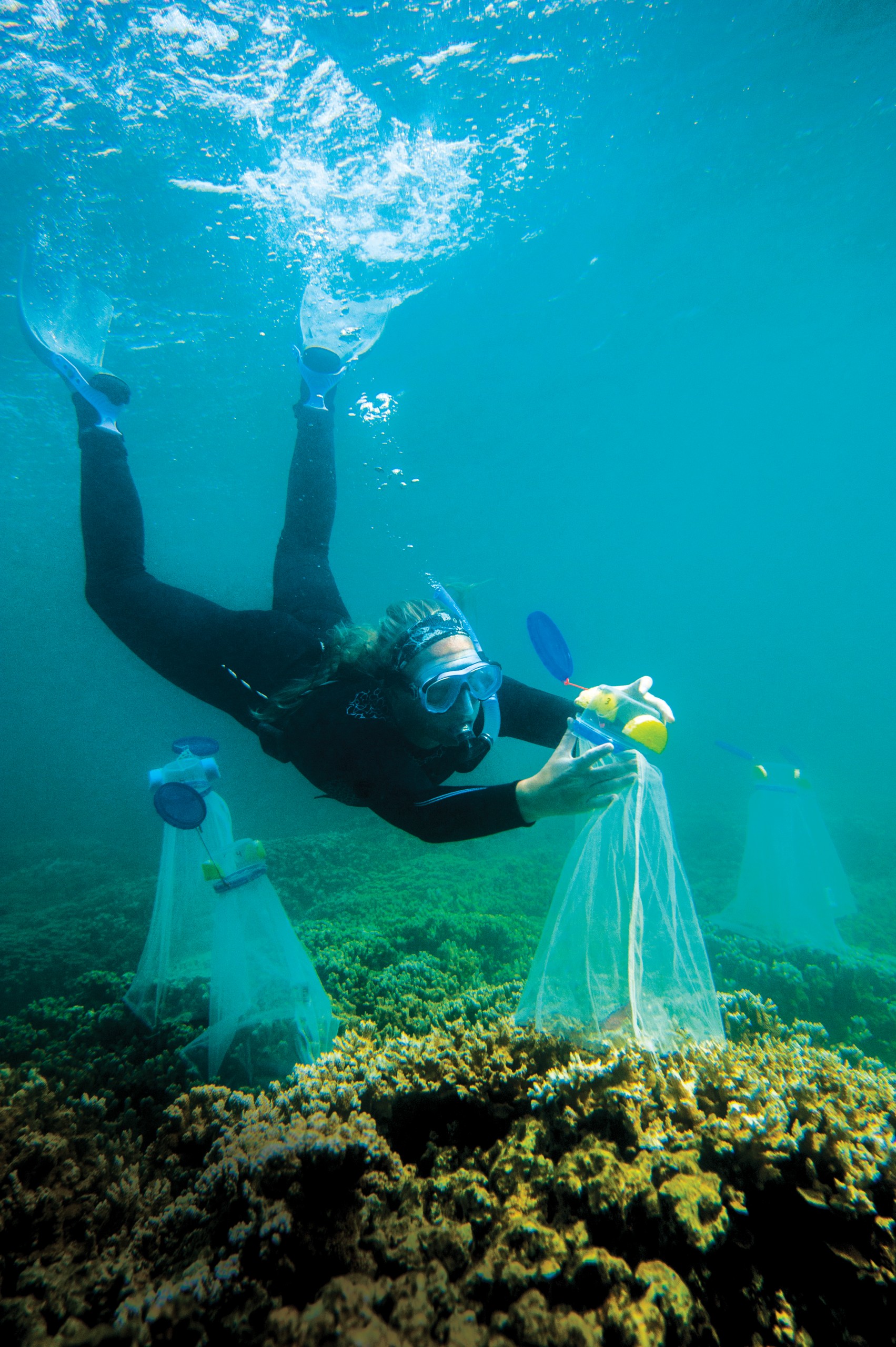
Time: Friday, 4:43 p.m.
Location: Gates Coral Lab
Photographer: Elyse Butler
